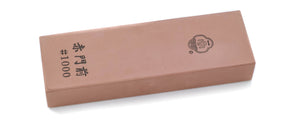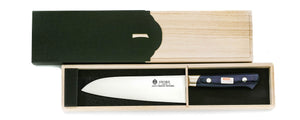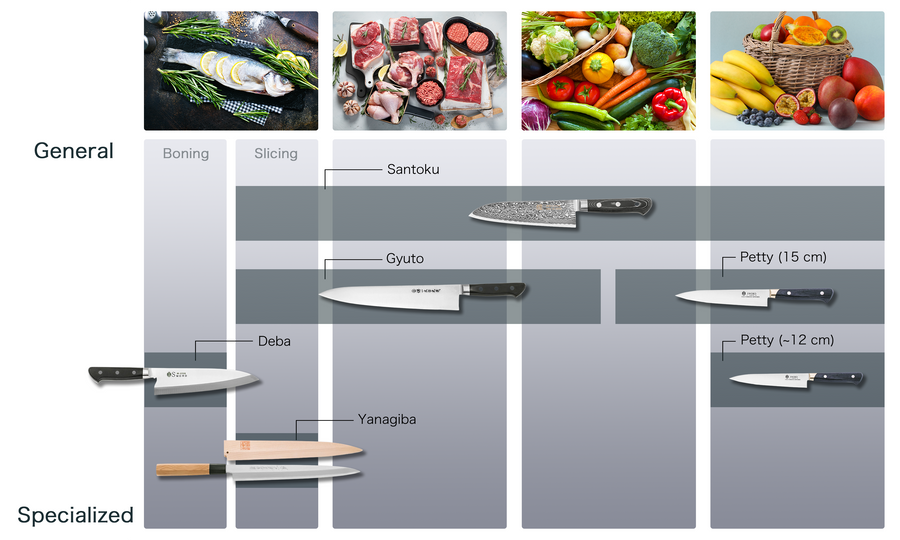
Montanren
Montanren refers to the wavy pattern on the back side of the blade, where the boundary between soft iron and steel is wavy like the blade pattern of a Japanese sword. This requires a high level of skill, and there are only a limited number of craftsmen in Sakai who are able to do this.
Comparison of Carbon Steels : Blue Steel #1
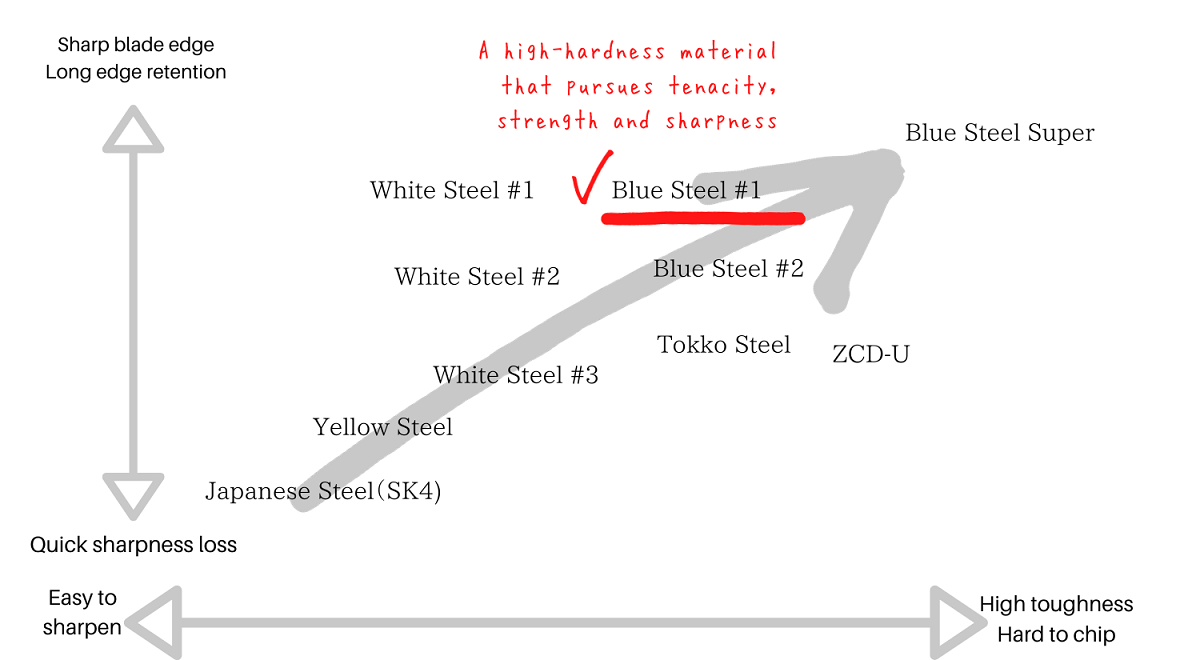
Outstanding edge retention and exceptional cutting power
| Product number | Actual Blade Length (mm) | Full Length (mm) | Total Weight (g) |
|---|---|---|---|
| 1uk7-195 | 185 | 340 | 200 |
| 1uk7-210 | 200 | 355 | 240 |
| 1uk7-225 | 210 | 375 | 265 |
| 1uk7-240 | 230 | 395 | 345 |
| Blade | Material Name | Handle |
|---|---|---|

Single Edged |
Blue Steel #1 | Yew octagonal handle |

Usuba (Kamagata Type)
Usuba Knives are used for cutting, chopping, and peeling vegetables in Japanese cuisine. The Kamagata type (the rectagle shape) is common used in the Kansai region (the western part of Japan). The edge is straight from chin to top.Most professionals use a 210mm type of Usuba Knife which has single-edged blade. On the contrary, a Nakiri Knife which has double-edged blade is more popular for home use.
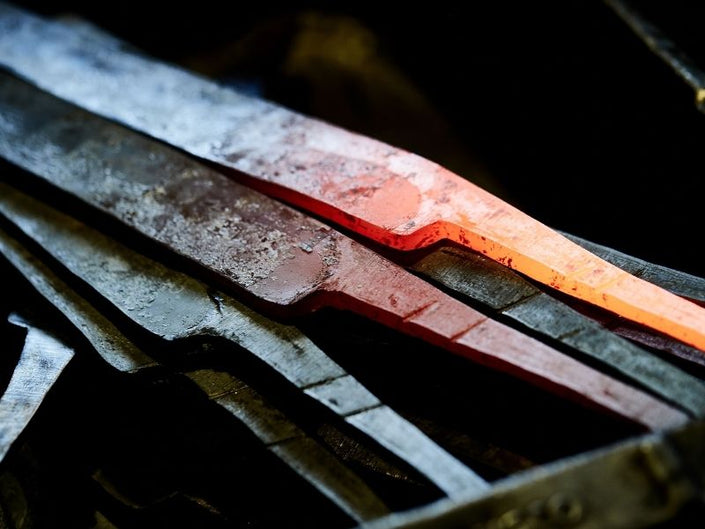
Blue Steel #1
Carbon Steel
Like Blue Steel #2, Blue Steel #1 contains a small amount of Tungsten which improves hardness and Chromium which improves overall toughness, but it has a higher carbon content than Blue Steel #2. This makes Blue Steel #1 harder than Blue Steel #2, leading to good sharpness and better edge retention. It is recommended for people who need a long lasting edge for long periods of cooking.
*NOTE: The Carbon Steel is susceptible to rust if it is not properly cared for. Please clean and dry the blade regularly during use.
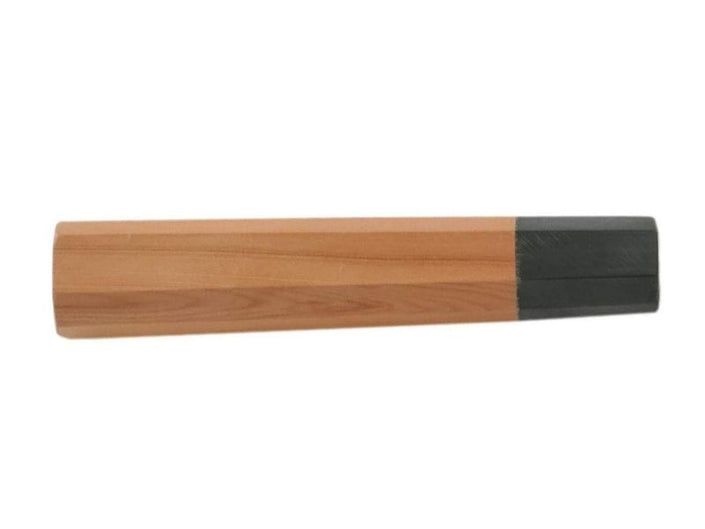
Yew octagonal handle
Handle
These handles are made from Yew wood, this wood was historically used in European Longbows due to its density, strength and rot resistance. It was also used by Prince Shotoku , a regent in the Japanese Court.This wood is characterized by its beautiful grain and a color that darkens with age.

Forge Welded
Forging Process
A forge welded blade is essentially a blade made of more than one billet of steel. There are many variations of technique and steel combinations. At its most simple, a forge welded blade is two billets of steel heated and hammer together to form one unified piece. The steel will then be shaped by hammer into the desired blade shape. Hardened and tempered, then ground, sharpened and polished. A forge welded blade has higher strength and edge retention than a stamped blade.

Optional Engraving
Optional Engraving Service
Sakai Ichimonji provides complimentary engraving using either Japanese Kanji or English Alphabet. Please specify your preference. For details, please visit here
A knife store that has supported the history of knives and food culture in Japan.
It has been 600 years since the birth of swordmaking in the Sakai region of Japan. Sakai Ichimonji Mitsuhide's and it's craftsmen continue to build on that legacy by producing the finest blades in Japan.
This is where the culture of completing a dish of sashimi by "just cutting" and the culture of expressing sharpness as "taste" was born.
For 70 years, we have been connecting the spirit of Sakai's craftsmen with the passion of chefs in Osaka's kitchen equipment shopping district, known as the kitchen of Japan.
We are very happy that our knives can be used by people all over the world.
Precautions
After use, wash off any dirt and wipe thoroughly with a dry cloth to remove any moisture. This product is not for use with frozen foods.This product is handmade, so each piece will be different. Please use the weight and length listed as a guide. Each material is natural and may vary in color. It is not the same as the picture.We take great care with our inventory, but in the unlikely event that we are out of stock, we will contact you by email to let you know.



























